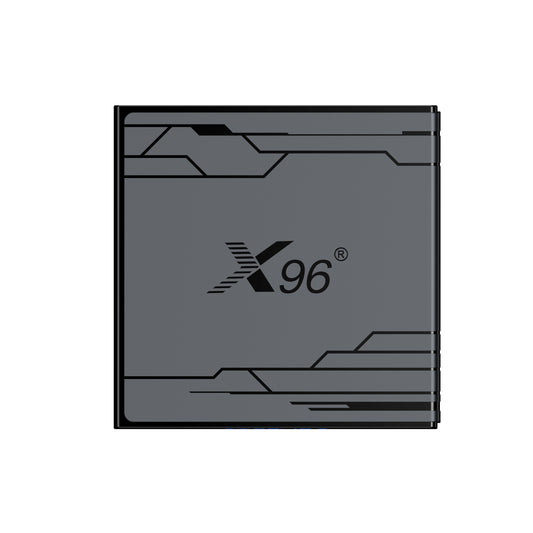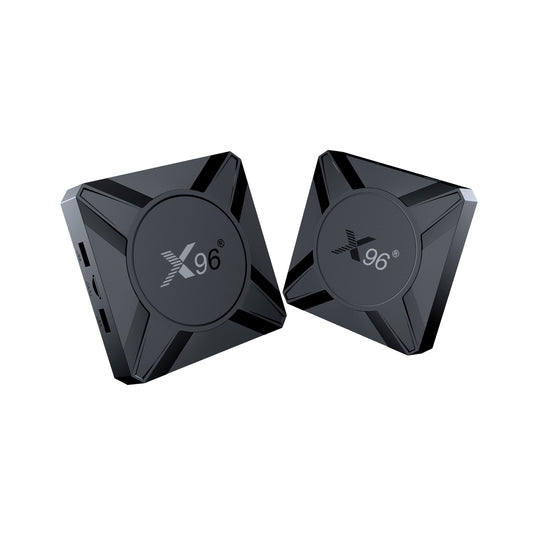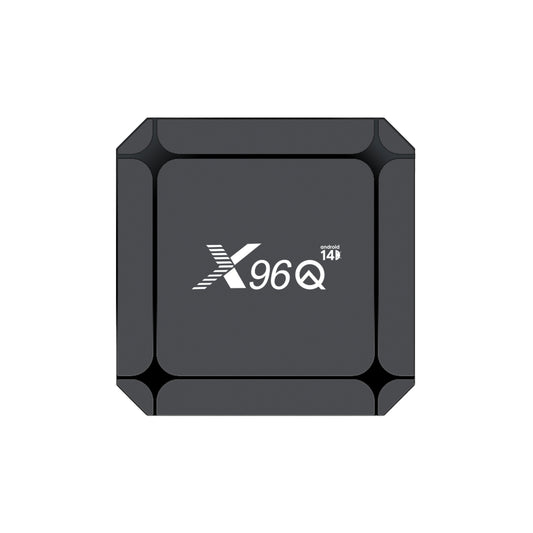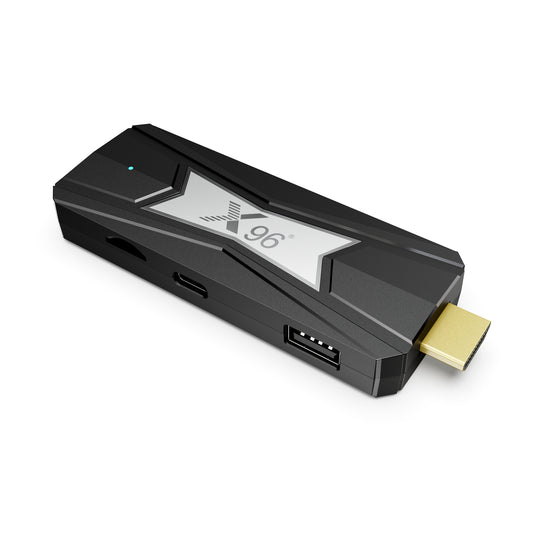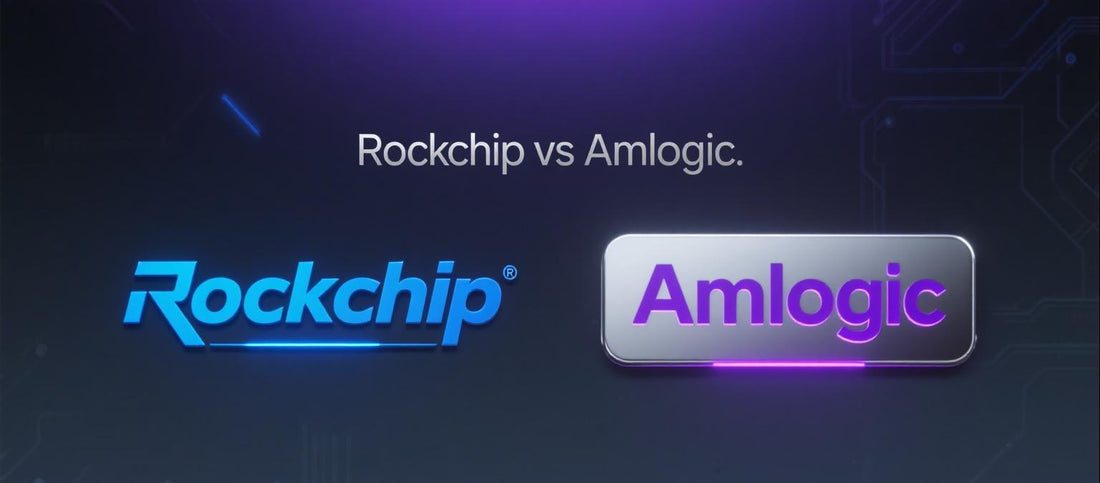
Which is better rockchip vs amlogic ?
Rockchip VS Amlogic, Rockchip leads in high-performance industrial and AI applications (e.g., RK3588’s 8K multi-display, NPU acceleration, and –20°C to 70°C ruggedness), dominating edge computing, robotics, and medical systems. Amlogic excels in consumer media efficiency, with chips like S928X/S905X5M prioritizing cost-effective AV1/Dolby Vision streaming, Wi-Fi 6, and optimized Android TV experiences for home entertainment.
1. What is an Amlogic processor?
1.1 Brand Origin and Development
Company Background
Founded: Amlogic (Amlogic Semiconductor Inc.) was established in 1995 and is headquartered in Shanghai, China. It specializes in designing multimedia system-on-chip (SoC) solutions.
Core Focus: Initially focused on DVD/Blu-ray decoder chips, the company later pivoted to developing SoCs for smart devices, including TV boxes, smart TVs, and automotive infotainment systems.
Market Position: A global leader in OTT (Over-the-Top) chip solutions, Amlogic is recognized as one of China’s top three consumer electronics chip manufacturers, alongside Rockchip and Allwinner.
Technological Evolution
Early Products: In the 2000s, Amlogic gained prominence with DVD decoder chips supporting formats like MPEG-2 and H.264.
Smart Era: Post-2010, the company shifted to Android TV-oriented chips, with flagship series like the S805 and S905, which introduced 4K HDR, AI voice control, and advanced connectivity.
Recent Innovations: Expanding into AIoT (Artificial Intelligence of Things), Amlogic now integrates NPUs (Neural Processing Units) into chips like the A311D, targeting smart home devices and edge computing.
1.2 Technical Performance
Architecture
CPU: Utilizes ARM Cortex-A series cores (e.g., A53, A55, A73) in 4-8 core configurations, clocked at 1.5–2.2 GHz, balancing performance and power efficiency.
GPU: Integrates Mali GPUs (e.g., Mali-G31, G52) with support for OpenGL ES and Vulkan APIs, catering to mid-range graphics rendering.
Process Technology: Transitioned from 28nm to 12nm (e.g., S905X4), enhancing energy efficiency and integration density.
Multimedia Capabilities
Video Decoding: Supports 4K@60fps, HDR10/HLG, and AV1 codecs, certified for streaming platforms like Netflix and Disney+.
Audio Processing: Built-in Dolby Atmos and DTS:X decoding for immersive surround sound.
AI Acceleration: High-end chips feature NPUs (e.g., 1.5 TOPS) for tasks like image recognition and voice interaction.
Power Efficiency
Typical power consumption ranges from 2W to 5W, enabling passive cooling designs in compact devices.
3. Application Scope
Amlogic processors are widely used in various applications due to their versatility and performance. Here are some common application areas:
1. Set-Top Boxes: Amlogic processors are commonly found in digital set-top boxes for streaming services, cable TV, and satellite TV, providing high-definition video playback and advanced multimedia capabilities.
2. Smart TVs: Many smart TVs utilize Amlogic processors to enable features like 4K video playback, HDR support, and access to various apps and streaming platforms.
3. Android TV Boxes: Amlogic chips power numerous Android TV boxes, allowing users to stream content, play games, and access a wide range of applications.
4. Media Players: These processors are also used in standalone media players, providing support for multiple video formats and enhanced audio processing.
5. Home Automation Devices: Amlogic processors can be integrated into smart home devices, enabling functionalities such as voice control, remote access, and automation features.
6. Embedded Systems: They are utilized in various embedded systems for industrial applications, providing efficient processing power for tasks such as data collection, monitoring, and control.
7. Gaming Consoles: Some gaming devices leverage Amlogic processors for their graphics processing capabilities and overall performance.
8. IoT Devices: Amlogic processors are increasingly being used in Internet of Things (IoT) devices, supporting connectivity and data processing for smart devices.
Overall, Amlogic processors are known for their efficiency, performance, and ability to handle high-definition content, making them suitable for a wide range of consumer electronics and smart technology applications.
2. What is an Rockchip processor?
2.1 Origin and Background
Rockchip Electronics, founded in 2001 and headquartered in Fuzhou, China, emerged as a key player in the semiconductor industry by focusing on cost-effective System-on-Chip (SoC) solutions for consumer electronics. Initially targeting portable media players (PMPs) and MP3/MP4 devices, the company gained traction with its RK27xx series in the mid-2000s, which dominated the budget multimedia player market. The shift to ARM architecture in the late 2000s marked a turning point, aligning Rockchip with the Android ecosystem. Its RK29xx and RK30xx series became widely adopted in early Android tablets and set-top boxes, establishing Rockchip as a competitive alternative to industry giants like MediaTek and Allwinner.
2.2 Performance Characteristics
Rockchip processors balance affordability with versatile performance, leveraging ARM Cortex cores and custom accelerators:
- Entry-Level (e.g., RK3328, RK3566):
Built on 28nm–22nm processes, these chips integrate quad-core Cortex-A53/A55 CPUs and Mali-G31/52 GPUs, targeting 1080p–4K video decoding (H.265/VP9) for budget streaming devices, IoT gateways, and industrial controllers. Power efficiency (2–5W TDP) makes them ideal f - or fanless designs.
- Mid-Range (e.g., RK3399, RK3588):
Featuring big.LITTLE architectures (e.g., Cortex-A72 + A53 in RK3399), these SoCs support 4K@60Hz output, PCIe 3.0, and USB 3.1. The flagship RK3588 (8nm process) combines four Cortex-A76 and four Cortex-A55 cores with a Mali-G610 GPU, enabling 8K video playback, dual 8K display outputs, and AI acceleration via a 6 TOPS NPU. - Multimedia and AI Capabilities:
Rockchip’s VPU (Video Processing Unit) supports advanced codecs like AV1 and HDR10+, while integrated NPUs (e.g., in RK3588) enable edge-AI tasks such as object detection and voice recognition.
2.3 Differences between Rockchip processors and Amlogic processors in application
When comparing the applications of Amlogic processors with those of Rockchip processors, several key differences emerge based on their design focus and target markets. Here’s a detailed look at the application differences between Amlogic and Rockchip processors:
1. Target Devices
- Amlogic Processors: These processors are predominantly found in high-end devices such as:
- Smart TVs: Amlogic chips are often used in premium smart TVs, providing advanced video processing capabilities and support for high-definition content.
- Set-Top Boxes: Many high-performance Android TV boxes and streaming devices utilize Amlogic processors to deliver smooth playback of 4K and HDR content.
- Media Players: Amlogic is commonly used in standalone media players that require robust multimedia support.
- Rockchip Processors: Rockchip processors are typically found in:
- Budget Tablets: Many low-cost tablets utilize Rockchip processors for basic functionality and multimedia consumption.
- Entry-Level Android TV Boxes: Rockchip is often chosen for budget-friendly TV boxes that provide standard streaming capabilities without the need for high-end processing power.
- Embedded Systems: Rockchip chips are also used in various embedded applications where cost efficiency is crucial.
2. Performance Requirements
- Amlogic: Designed for applications that demand high performance, Amlogic processors excel in:
- High-Resolution Video Playback: They are optimized for 4K and HDR video playback, making them suitable for devices that cater to home entertainment.
- Gaming: Amlogic processors are often used in devices that require enhanced graphics performance for gaming applications.
- Rockchip: While capable of handling multimedia tasks, Rockchip processors are more suited for:
- Basic Computing and Media Consumption: They are ideal for devices that do not require high-end processing, such as casual gaming or simple streaming.
- Cost-Effective Solutions: Rockchip processors are often selected for applications where budget constraints are a primary concern.
3. Software and Ecosystem
- Amlogic: Amlogic processors often come with robust software support, including:
- Custom Firmware: Many high-end devices utilize custom firmware optimized for Amlogic chips, enhancing user experience and performance.
- Compatibility with Streaming Services: Amlogic's strong multimedia capabilities often lead to better compatibility with major streaming services.
- Rockchip: Rockchip processors may have more limited software support, focusing on:
- Standard Android Experience: Many Rockchip devices run a standard version of Android, which may not be optimized for high-performance tasks.
- Open-Source Projects: Rockchip is sometimes used in open-source projects and DIY electronics, where flexibility and cost are prioritized.
3. Main List of Amlogic Processor
Here’s the updated list of important Amlogic processors, including the S905X4 chip:
1. Amlogic S805
- Quad-core ARM Cortex-A53
- Supports 4K video playback
- Commonly used in budget Android TV boxes and smart TVs.
2. Amlogic S905
- Quad-core ARM Cortex-A53
- Supports 4K HDR video playback
- Widely found in mid-range Android TV boxes and smart TVs.
3. Amlogic S905X
- Quad-core ARM Cortex-A53
- Supports HDR10 and VP9 decoding
- Commonly seen in various streaming devices and smart TVs.
4. Amlogic S912
- Octa-core ARM Cortex-A53
- Supports 4K HDR playback and advanced video processing
- Used in high-end Android TV boxes and smart TVs.
5. Amlogic S922X
- Hexa-core (4x Cortex-A73 + 2x Cortex-A53)
- Supports 4K HDR and advanced gaming capabilities
- Used in high-performance Android TV boxes and gaming consoles.
6. Amlogic S905X3
- Quad-core ARM Cortex-A55
- Supports AV1 codec and enhanced 4K HDR playback
- Suitable for next-generation streaming devices and smart TVs.
7. Amlogic S905X4
- Quad-core ARM Cortex-A55
- Supports 4K HDR and improved AI capabilities
- Designed for high-performance streaming devices and smart TVs.
These processors are vital in the market, widely used in various multimedia devices, providing options for manufacturers and consumers alike.
4. Main List of Rockchip Processor
Here’s a detailed overview of the specified Rockchip processors:
1. Rockchip RK3518
- Architecture: Quad-core ARM Cortex-A53
- Graphics: Mali-G31 GPU
- Video Support: Up to 4K video playback at 60fps, supports various video codecs
- Applications: Primarily used in smart TVs, Android TV boxes, and multimedia devices, offering a good balance of performance and efficiency for mid-range applications.
2. Rockchip RK3588
- Architecture: Octa-core (4x Cortex-A76 + 4x Cortex-A55)
- Graphics: Mali-G610 GPU
- Video Support: Supports 8K video playback, HDR, and advanced video processing capabilities
- Applications: Targeted at high-end applications such as premium smart TVs, AI-driven devices, and advanced multimedia setups, providing robust performance for demanding tasks.
3. Rockchip RK3566
- Architecture: Quad-core ARM Cortex-A55
- Graphics: Mali-G52 GPU
- Video Support: Supports 4K video playback and various multimedia formats
- Applications: Used in smart displays, AI applications, and mid-range tablets, offering a balance of performance and power efficiency suitable for diverse applications.
4. Rockchip RK3528
- Architecture: Quad-core ARM Cortex-A53
- Graphics: Mali-G31 GPU
- Video Support: Supports 4K video playback, compatible with various codecs
- Applications: Commonly found in cost-effective smart TVs and Android TV boxes, providing decent performance for budget-friendly devices.
These processors from Rockchip cater to a wide range of applications, from entry-level to high-performance multimedia and AI-driven devices, making them versatile options for manufacturers and developers.
5. Rockchip VS Amlogic
1. Company Overview & Market Focus
Rockchip (China):
Focuses on versatile AIoT applications, including industrial computing, retail AI terminals, medical devices, and mid-to-high-end TV boxes. Known for strong NPU integration, multi-display support, and scalability for edge computing. Recent flagship: RK3588 (8nm).
Amlogic (China):
Dominates consumer entertainment devices, especially TV boxes/sticks and smart TVs. Optimized for media decoding, HDR support, and cost efficiency. Flagship: S928X (12nm) for 8K streaming, and A311D (12nm) for AI-enhanced boxes
2. Mid-Range Chips for TV Boxes
| Model | Rockchip RK3566 | Amlogic S922X | Rockchip RK3528 | Amlogic S905X5M |
| CPU | 4× Cortex-A55 @1.8GHz | 4× A73 @2.0GHz + 2× A53 @1.8GHz | 4× Cortex-A53 @1.8GHz | 4× Cortex-A55 @2.4GHz |
| GPU | Mali-G52 2EE | Mali-G52 MP6 | Mali-450 MP2 | Mali-G57 |
| Video Playback | 4K@60fps H.265 | 4K@60fps H.265/HDR10 | 4K@60fps H.264/H.265 | 4K@60fps AV1/VP9 |
| AI Acceleration | 0.8 TOPS | ✘ | ✘ | ✘ |
| Connectivity | Wi-Fi 5, BT 4.2 | Wi-Fi 5, BT 4.2 | Wi-Fi 5, BT 4.2 | Wi-Fi 6, BT 5.2 |
| Target Market | Budget AIoT terminals | Premium TV boxes (e.g., Zidoo) | Entry-level TV boxes | Mid-range Android TV |
3. Performance Benchmarks & Real-World Use
CPU/GPU Efficiency
Amlogic S912 (8× A53) vs. Rockchip RK3328 (4× A53):
S912 delivers 2.5× higher GPU performance (Mali-T820 vs. Mali-450) and 30% better multi-core CPU scores in Antutu10.
Rockchip RK3368 (8× A53) vs. Amlogic S905 (4× A53):
Despite fewer cores, S905 achieves ~10% higher Antutu scores (28,189 vs. 25,525) due to better single-thread optimization7.
AI & Industrial Edge Capability 36
Rockchip RK3568 (4× A55 + Mali-G52):
Integrates 1 TOPS NPU, enabling real-time retail AI (e.g., 0.8s/item barcode scanning, face detection)
RK3588 supports 6 TOPS NPU for medical imaging (e.g., 8K endoscopy processing in PPC-3156QAR tablets)
4. Target Markets & Strengths Summary
| Aspect | Rockchip | Amlogic |
| Core Strengths | NPU scalability, multi-display, industrial reliability | Media decoding, HDR/Dolby Vision, cost efficiency |
| Best For | AI edge terminals (retail/medical) | Premium TV boxes (8K/HDR) |
| Multi-screen control systems | Android TV sticks | |
| Linux-driven industrial PCs | Budget streaming devices | |
| Weaknesses | Limited AV1 support in mid-range chips | Inferior multi-thread CPU/NPU in flagships |
| Typical OS | Linux, Android | Android, Linux (less common) |
6. Rockchip VS Amlogic Conclusion
Rockchip excels in high-performance computing and AI-driven applications, making it ideal for industrial, medical, and edge-AI solutions. Its flagship chips like the RK3588 (8nm) feature advanced octa-core CPUs (Cortex-A76/A55), robust NPUs (up to 6 TOPS), and support 8K multi-display output or 16x video streams. With industrial-grade temperature resilience (–20°C to 70°C) and strong Linux compatibility, Rockchip dominates scenarios requiring reliability, AI acceleration (e.g., robotics, smart retail), and multi-task scalability.
Amlogic leads in consumer media efficiency and affordability, particularly for TV boxes and streaming devices. Chips like the S928X (12nm) prioritize 8K/HDR video decoding (Dolby Vision, AV1) and power optimization, while mid-range options (e.g., S905X5M) offer Wi-Fi 6 and AV1 support at competitive costs. Though weaker in raw CPU/NPU performance versus Rockchip, Amlogic delivers superior plug-and-play media experiences, smooth Android integration, and better value for home entertainment systems.

